22 found, showing page 1 of 2
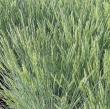
Height: 8 inches
Spread: 12 inches
Sunlight: full sun, partial shade
Hardiness Zone: 2b
Other Names: Festuca ovina var. glauca
Description:
A dwarf ornamental grass featuring bright silver-blue foliage; neat mounds of densely tufted leaves stay blue all season long; tall upright tan plumes sway in the breeze; drought tolerant once established, great for containers, beds and borders
Ornamental Features:
Elijah Blue Fescue is primarily valued in the garden for its interestingly mounded form. Its attractive grassy leaves remain blue in color throughout the year. The tan seed heads are carried on spikes from mid summer to late fall.
Landscape Attributes:
Elijah Blue Fescue is an herbaceous evergreen perennial grass with a mounded form. It brings an extremely fine and delicate texture to the garden composition and should be used to full effect.
This is a relatively low maintenance plant, and is best cleaned up in early spring before it resumes active growth for the season. It has no significant negative characteristics.
Elijah Blue Fescue is recommended for the following landscape applications:
- Rock/Alpine Gardens
- Border Edging
- General Garden Use
- Naturalizing And Woodland Gardens
- Container Planting
Planting & Growing:
Elijah Blue Fescue will grow to be about 8 inches tall at maturity, with a spread of 12 inches. Its foliage tends to remain low and dense right to the ground. It grows at a medium rate, and under ideal conditions can be expected to live for approximately 8 years. As an evegreen perennial, this plant will typically keep its form and foliage year-round.
This plant does best in full sun to partial shade. It prefers to grow in average to dry locations, and dislikes excessive moisture. It is considered to be drought-tolerant, and thus makes an ideal choice for a low-water garden or xeriscape application. It is not particular as to soil type or pH. It is highly tolerant of urban pollution and will even thrive in inner city environments. This is a selected variety of a species not originally from North America. It can be propagated by division; however, as a cultivated variety, be aware that it may be subject to certain restrictions or prohibitions on propagation.
Elijah Blue Fescue is a fine choice for the garden, but it is also a good selection for planting in outdoor pots and containers. It is often used as a 'filler' in the 'spiller-thriller-filler' container combination, providing a canvas of foliage against which the thriller plants stand out. Note that when growing plants in outdoor containers and baskets, they may require more frequent waterings than they would in the yard or garden.
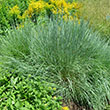
Upright clumps of slender, flat, linear bluish green leaves. Purplish-bronze blooms. Tolerates black walnut. USDA 3-9
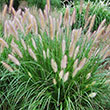
Tan bottlebrush blooms. Arching dark green foliage. Mounding. USDA 6-9
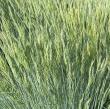
Blue foliage. Clumping. Heat tolerant. Semi-evergreen. USDA 4-8
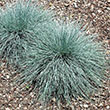
Intense blue foliage. Non-fading. Semi-evergreen. USDA 4-9
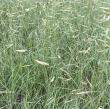
Blue Grama Grass 'Blonde Ambition' | Chartreuse flowers & tan Seed Heads. Naturalizing. USDA 3-10
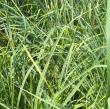
Foliage turns golden orange in the fall. Clump forming. USDA 5-8
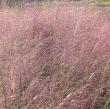
Plant Height: 18 inches
Flower Height: 30 inches
Spacing: 18 inches
Sunlight: full sun, partial shade
Hardiness Zone: 5a
Brand: Plant Select
Description:
A native mounding grass with very fine green foliage; airy plumes of minute ruby flowers in fall, appear like reddish fluffy clouds that dry after frost, and remain attractive through winter; breathtaking planted in masses; adaptable and hardy
Ornamental Features:
Undaunted Ruby Muhly Grass features airy plumes of ruby-red flowers rising above the foliage from late summer to mid fall. The rose seed heads are carried on showy plumes which fade to tan over time, which are displayed in abundance from late fall to late winter. Its grassy leaves remain green in color throughout the season.
Landscape Attributes:
Undaunted Ruby Muhly Grass is a dense herbaceous perennial grass with a shapely form and gracefully arching stems. It brings an extremely fine and delicate texture to the garden composition and should be used to full effect.
This is a relatively low maintenance plant, and is best cleaned up in early spring before it resumes active growth for the season. Deer don't particularly care for this plant and will usually leave it alone in favor of tastier treats. Gardeners should be aware of the following characteristic(s) that may warrant special consideration:
- Self-Seeding
Undaunted Ruby Muhly Grass is recommended for the following landscape applications:
- Mass Planting
- Rock/Alpine Gardens
- General Garden Use
- Groundcover
- Container Planting
Planting & Growing:
Undaunted Ruby Muhly Grass will grow to be about 18 inches tall at maturity extending to 30 inches tall with the flowers, with a spread of 24 inches. When grown in masses or used as a bedding plant, individual plants should be spaced approximately 18 inches apart. It grows at a slow rate, and under ideal conditions can be expected to live for approximately 10 years. As an herbaceous perennial, this plant will usually die back to the crown each winter, and will regrow from the base each spring. Be careful not to disturb the crown in late winter when it may not be readily seen!
This plant does best in full sun to partial shade. It prefers dry to average moisture levels with very well-drained soil, and will often die in standing water. It is considered to be drought-tolerant, and thus makes an ideal choice for a low-water garden or xeriscape application. This plant does not require much in the way of fertilizing once established. It is not particular as to soil pH, but grows best in poor soils. It is somewhat tolerant of urban pollution. This is a selection of a native North American species. It can be propagated by division; however, as a cultivated variety, be aware that it may be subject to certain restrictions or prohibitions on propagation.
Undaunted Ruby Muhly Grass is a fine choice for the garden, but it is also a good selection for planting in outdoor pots and containers. It can be used either as 'filler' or as a 'thriller' in the 'spiller-thriller-filler' container combination, depending on the height and form of the other plants used in the container planting. Note that when growing plants in outdoor containers and baskets, they may require more frequent waterings than they would in the yard or garden.
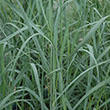
Blue-green foliage with feathery, pinkish-white plumes in summer. Strong, upright habit. USDA 5-9
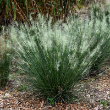
Plant Height: 3 feet
Flower Height: 4 feet
Spread: 3 feet
Sunlight: full sun, partial shade
Hardiness Zone: 5b
Other Names: Gulf Muhly
Description:
A mounding grass with very fine, glossy green foliage; airy plumes of white flowers in fall gives one a sense of fluffy clouds, that will eventually fade to tan seed pods in late fall and winter; breathtaking planted in masses
Ornamental Features:
White Cloud Muhly Grass features airy plumes of white flowers rising above the foliage from late summer to mid fall. The tan seed heads are carried on showy plumes displayed in abundance in late fall. Its glossy grassy leaves remain green in color throughout the season.
Landscape Attributes:
White Cloud Muhly Grass is a dense herbaceous perennial grass with a shapely form and gracefully arching stems. It brings an extremely fine and delicate texture to the garden composition and should be used to full effect.
This is a relatively low maintenance plant, and is best cleaned up in early spring before it resumes active growth for the season. Deer don't particularly care for this plant and will usually leave it alone in favor of tastier treats. It has no significant negative characteristics.
White Cloud Muhly Grass is recommended for the following landscape applications:
- Mass Planting
- Rock/Alpine Gardens
- General Garden Use
- Groundcover
- Container Planting
Planting & Growing:
White Cloud Muhly Grass will grow to be about 3 feet tall at maturity extending to 4 feet tall with the flowers, with a spread of 3 feet. It grows at a slow rate, and under ideal conditions can be expected to live for approximately 10 years. As an herbaceous perennial, this plant will usually die back to the crown each winter, and will regrow from the base each spring. Be careful not to disturb the crown in late winter when it may not be readily seen!
This plant does best in full sun to partial shade. It prefers dry to average moisture levels with very well-drained soil, and will often die in standing water. It is considered to be drought-tolerant, and thus makes an ideal choice for a low-water garden or xeriscape application. It is particular about its soil conditions, with a strong preference for poor, acidic soils. It is somewhat tolerant of urban pollution. This is a selection of a native North American species. It can be propagated by division; however, as a cultivated variety, be aware that it may be subject to certain restrictions or prohibitions on propagation.
White Cloud Muhly Grass is a fine choice for the garden, but it is also a good selection for planting in outdoor pots and containers. Because of its height, it is often used as a 'thriller' in the 'spiller-thriller-filler' container combination; plant it near the center of the pot, surrounded by smaller plants and those that spill over the edges. It is even sizeable enough that it can be grown alone in a suitable container. Note that when growing plants in outdoor containers and baskets, they may require more frequent waterings than they would in the yard or garden.
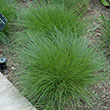
Purple bloom. Upright foliage with blue base. Fall color. Native. USDA 3-9
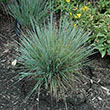
Patent: PP25202
Height: 4 feet
Spread: 20 inches
Sunlight: full sun
Hardiness Zone: 3a
Other Names: Little Bluestem
Description:
An excellent variety for hot, dry areas with consistent green-blue, ribbon-like foliage that takes on hues of violet-purple in fall; silvery white seed heads persist well into winter; an outstanding accent plant
Ornamental Features:
Standing Ovation Bluestem's attractive grassy leaves are dark green in color with showy silvery blue variegation and tinges of purple on a plant with an upright spreading habit of growth. As an added bonus, the foliage turns a gorgeous violet in the fall. It has masses of beautiful spikes of purple flowers rising above the foliage in late summer, which are most effective when planted in groupings.
Landscape Attributes:
Standing Ovation Bluestem is an herbaceous perennial grass with an upright spreading habit of growth. It brings an extremely fine and delicate texture to the garden composition and should be used to full effect.
This is a relatively low maintenance plant, and is best cut back to the ground in late winter before active growth resumes. It has no significant negative characteristics.
Standing Ovation Bluestem is recommended for the following landscape applications:
- Mass Planting
- General Garden Use
- Groundcover
Planting & Growing:
Standing Ovation Bluestem will grow to be about 3 feet tall at maturity, with a spread of 20 inches. It grows at a medium rate, and under ideal conditions can be expected to live for approximately 10 years. As an herbaceous perennial, this plant will usually die back to the crown each winter, and will regrow from the base each spring. Be careful not to disturb the crown in late winter when it may not be readily seen!
This plant should only be grown in full sunlight. It is very adaptable to both dry and moist locations, and should do just fine under typical garden conditions. It is considered to be drought-tolerant, and thus makes an ideal choice for a low-water garden or xeriscape application. It is not particular as to soil type or pH. It is somewhat tolerant of urban pollution. This is a selection of a native North American species. It can be propagated by division; however, as a cultivated variety, be aware that it may be subject to certain restrictions or prohibitions on propagation.

Height: 5 feet
Spread: 3 feet
Sunlight: full sun partial shade
Hardiness Zone: 2b
Ornamental Features:
Switch Grass features airy plumes of rose flowers rising above the foliage in mid summer. The brick red seed heads are carried on showy plumes displayed in abundance from late summer to mid fall. Its grassy leaves are green in color. The foliage often turns yellow in fall.
Landscape Attributes:
Switch Grass is an herbaceous perennial grass with an upright spreading habit of growth. Its relatively fine texture sets it apart from other garden plants with less refined foliage.
This is a relatively low maintenance plant, and is best cut back to the ground in late winter before active growth resumes. It has no significant negative characteristics.
Switch Grass is recommended for the following landscape applications:
- Accent
- Mass Planting
- General Garden Use
Planting & Growing:
Switch Grass will grow to be about 4 feet tall at maturity, with a spread of 3 feet. It tends to be leggy, with a typical clearance of 1 foot from the ground, and should be underplanted with lower-growing perennials. It grows at a medium rate, and under ideal conditions can be expected to live for approximately 15 years. As an herbaceous perennial, this plant will usually die back to the crown each winter, and will regrow from the base each spring. Be careful not to disturb the crown in late winter when it may not be readily seen!
This plant does best in full sun to partial shade. It is very adaptable to both dry and moist locations, and should do just fine under typical garden conditions. It is considered to be drought-tolerant, and thus makes an ideal choice for a low-water garden or xeriscape application. It is not particular as to soil type, but has a definite preference for alkaline soils, and is able to handle environmental salt. It is somewhat tolerant of urban pollution. This species is native to parts of North America. It can be propagated by division.
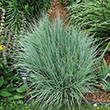
Bronze blooms. Blue-pink tinged foliage. Upright. Native. USDA 3-9

Dark, smoky rose-purple flower spikes. Deep green arching foliage. USDA 5-8
22 found, showing page 1 of 2